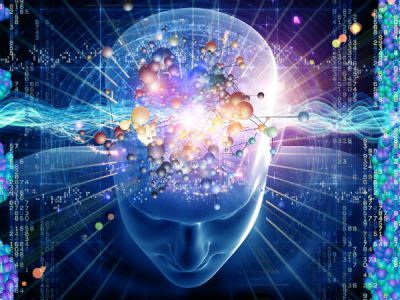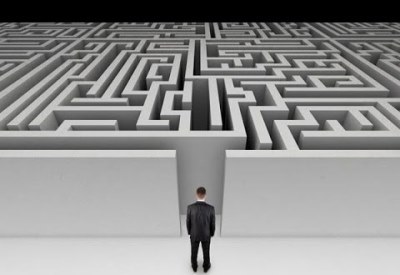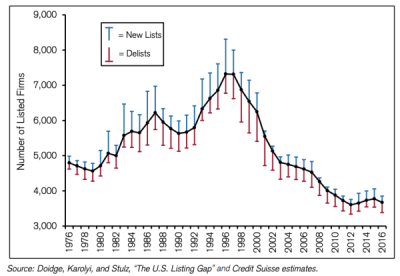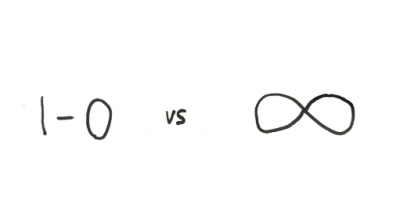Jeremie Averous's Blog, page 35
December 12, 2019
How We Need to Learn to Work with AI
This article ‘Humans and AI will work better when they start learning from each other‘ is part of a growing realization that AI will enhance human capabilities rather than compete or replace them.

“Trust plays a significant role in decreasing the cognitive complexity users face in interacting with sophisticated technology. Consequently, its absence leads to an AI model’s underutilization or abandonment“. “Technology will be just as good if all groups understand the evidence behind it and prepare themselves to use it effectively“.
While there are ways to improve the interaction with AI and still substantial progress is required in this area (interface design, etc), end-users must also learn to deal with, and understand the limits of AI. This is new skill-set that will need to be learnt and taught in the future.
We can expect a few years of soul-searching, finding ways to leverage better those AI engines that are pervading our lives, while those AI persona and their interface will also quickly improve.
We need to learn how to leverage the AI capabilities now available. This will take time to become a clear skill-set and I am quite excited to see how this will get formalized in terms of behaviors and adaptation of AI interfaces.

December 10, 2019
How Our Brains Filter Perception More and at a Lower Level Than We Thought
In this excellent article ‘To Pay Attention, the Brain Uses Filters, Not a Spotlight‘ we are reminded that filtering is a major activity of our brain with a particular emphasis on attention management. However it obviously has some drawbacks.

“Somehow, even with massive amounts of information flooding our senses, we’re able to focus on what’s important and act on it.” By researching about this effect of focalisation researchers have actually found out that our brain uses deeply ingrained filtering mechanisms, beyond our cortex regions. “The attentional searchlight metaphor was backward: The brain wasn’t brightening the light on stimuli of interest; it was lowering the lights on everything else.”
Moreover, “[the] findings indicate that the brain casts extraneous perceptions aside earlier than expected. And filtering is starting at that very first step, before the information even reaches the visual cortex.” This shows that there is a substantial amount of information that gets filtered without even reaching any level of consciousness. This shows that we unconsciously filter much more than what we would believe!
Interesting new research paths are described, in particular how perception and movement get interlinked at a very low brain level.
In any case it becomes obvious that our filtering mechanisms are useful and dangerous at the same time, and they are so deeply ingrained in our brains that we can’t even hope to become conscious of it. Food for thought!

December 7, 2019
How To Avoid that Increasing Complexity of Business Leads to Collapse
In this Gapingvoid post about business complexity, that refers to a Clay Shirky 2010 post ‘The Collapse of Complex Business Models‘, we are reminded that excessive increase in complexity often leads to collapse of organisations or societies (and not to improved adaptability).

Organisations and societies would sometime collapse because of their sophistication. According to some studies, increase in complexity is first positive, before reaching a point of diminishing returns and even becoming detrimental. And “When societies fail to respond to reduced circumstances through orderly downsizing, it isn’t because they don’t want to, it’s because they can’t.”
The issue here is not that complexity inevitably increases in organizations and societies. It does. The issue is how to ensure that this additional complexity makes the organization or society more flexible and adaptable to substantial changes and shifts in its environment – and not too rigid, leading to collapse.
In the business world I know only of one solution: allowing new activities to develop in relatively independent subsidiaries. They may one day replace the mother company as values shift, but then the accretion of new activities won’t create excessive additional complexity and the various activities remain relatively flexible and nimble. The case for the diversified group of companies as a way to be more resilient is open!

December 5, 2019
How the Economy Increasingly Becomes a Project Economy
In this post ‘Welcome to the Project Economy‘, an interesting perspective if given on the transformation of economic activity towards a project-based activity (to be taken with a pinch of salt though, the author being part of PMI and thus promoting project-specific training and certification).

Still, the historical perspective provided in the post is interesting and quite aligned with my views. “A century [after the Industrial Revolution], the future of work has once again become a central topic. Technological advancements and automation are provoking a business transformation every bit as radical as the one set in motion a hundred years ago.” “Amidst all this chaos, one thing is clear: the 4th Industrial Revolution has unleashed The Project Economy. The fusion of physical and digital in a desire to blend speed and precision as organizations integrate strategy design and delivery, is taking hold in broader and more sophisticated ways“. The post goes on to give interesting examples in a number of companies and industries.
I certainly concur about this transformation and this explains why I am passionate about project management. At the same time, there are many different types of projects and ways to approach them, and it may be a bit excessive to broaden the concept too much or to try to put all projects under the same approaches and methods.
What’s exciting is that each project remains a single human adventure involving a limited team to create new stuff that may change the world. How many projects are you in at the moment?

December 3, 2019
How the Number of Publicly Listed Companies Decreases
In this otherwise illuminating post ‘Fixing Capitalism’s Oligopoly: A Response To Ray Dalio And John Mauldin‘ I noticed a particular aspect, which is the strong decrease of the number of publicly listed companies in favor of private capital.

This trend is very noticeable since the end of the 1990’s. “The phenomenon is under-researched, but the papers that have been done look at issues like 1) impact of Sarbanes-Oxley (SOX), 2) growth of private equity capital, 3) the growth of M&A activity on Wall St and its need to keep the pipeline growing, and 4) a number of structural issues (like SOX) hurting small company formation“. The author believes that it is mostly the growth of private capital that explains this trend, which in turns tends to explain the much higher share of income captured by the wealthy (company owners). Another aspect is the increasing industry concentration with very large players that attain quasi monopolistic status.
This trend is at the same time interesting and problematic. It shows that probably a greater share of value creation is not directly accessible by the public through public shares. This, in turn, generates a number of interesting questions about the structure of our economy. Its agility is in question, and thus its future adaptability. Not quite the trend that would be expected in an increasingly unpredictable world.

November 30, 2019
How Complexity can Emerge Even from Simple Systems
In this interesting article ‘Physicists discover surprisingly complex states emerging out of simple synchronized networks‘ we discover that complexity can emerge even from simple systems.

In fact, we know that complexity can already emerge from the ‘three body problem’, which is unpredictable beyond a certain time. Those are passive elements, however, and now scientists show how complexity can also emerge from active machines or beings. “Caltech researchers have shown experimentally how a simple network of identical synchronized nanomachines can give rise to out-of-sync, complex states“
“The findings experimentally demonstrate that even simple networks can lead to complexity, and this knowledge, in turn, may ultimately lead to new tools for controlling those networks. For example, by better understanding how heart cells or power grids display complexity in seemingly uniform networks, researchers may be able to develop new tools for pushing those networks back into rhythm.”
Complexity is more widespread than we think and how to welcome it is a major issue in the modern world. Let’s work towards this!

November 28, 2019
How Important It Is to Distinguish Between Finite and Infinite Games
In this excellent speech ‘What game theory teaches us about war’ (Youtube), Simon Sinek reminds us that there isa great difference between playing finite or infinite games. This brings back to the book ‘Finite and Infinite Games‘ by James Carse.

“There are two types of games: there are finite games and there are infinite games. A finite game is defined as known players fixed rules and agreed-upon objective (such as baseball for example). An infinite game is defined as known and unknown players the rules are changeable and the objective is to perpetuate the game.“
He reminds us then that business or strategy is an infinite game, and those finite players won’t last long. “The game of business is an infinite game. The concept of business has existed longer than every single company that exists right now and it’ll exist long after all the companies that exist right now go away. The funny thing about business is the number of companies that are playing finite they’re playing to win they’re playing to be the best they’re playing to beat the quarter or the year and they’re always frustrated by that company that has an amazing vision, a long-term vision that seems to drive them crazy and over the long term that player will always win and the other player will run out of resources or the will and they’ll go out of business“.
There can be some differing views about how to play infinite games (see this post about whether the current unpredictability of US external policy could be a way to play the infinite game: ‘Why Simon Sinek is wrong about Game Theory.’
Still this distinction is important and it reminds us that when we play infinite games, rules are not so essential as they are constantly reinvented; and strategies such as unpredictability can be valid to have other players on their toes. Are you playing a finite or infinite game?

November 26, 2019
How Night Lights Illustrate Economic Development
This excellent YouTube Video shows how night light illustrates the level of economic development.

The illustration around how lights went off in Syria during the civil war, or the contrast between North and South Korea, or the evolution of India’s lighting levels over a short decade are great illustrations of how to witness economic development in a qualitative manner.
At the same time it reminds us that even the billion humans we are are but a few spots on the entire earth surface, and how quickly that little flicker of light can get extinguished should keep us quite humble!
Hat tip to Alex Tabarrok in the Marginal Revolution blog.

November 23, 2019
How to Create Rituals to Change
This excellent post by Leo Babauta ‘The Art of Creating a Ritual for What Matters Most‘ reminds us that an effective way to change is to create a ritual.

“In this world where technology and consumerism have become our religion, we’ve largely lost something magical: the ability to elevate something into the realm of the sacred.” “We can lift an everyday act into the realm of the divine by turning it into a sacred ritual. What I’ve been trying to practice is the art of turning what matters most in my life into a ritual.”
Leo Babuta goes on suggesting moment and activities that could be converted into rituals, and how to achieve this transformation.
Without attempting to change everything to a ritual, I note that it can be a very useful way to induce change and ensure that there is repetition of a voluntary action where we are present. We may gain at having a few rituals in our lives, with a spiritual element added on!

November 21, 2019
How the Former Sedentary Elite Reacts Against the New Nomadic Elite
Following up on our post ‘How the Notion of Country Is Becoming Progressively Obsolete‘, we can observe increasingly how the Industrial Age sedentary elite is reacting against an increasingly powerful nomadic elite.

My observation of the Fourth Revolution is that the revolution in communication capabilities places back the global nomad at the top of social and value hierarchy, after it had been displaced during the Agricultural and Industrial Age which depended a lot on huge local investments. The opposition and struggle between sedentary and nomads is age-old and it just took a new turn.
Many social movements such as the ‘Gilets Jaune’ in France, and more generally the crisis of local communities, can be connected to this major change. In addition to local territories, local elites feel displaced as more value is now captured by global nomads. This leads to strong reactions and struggles, one clear path being protectionism as an illusory protection against this trend. But that obviously can’t be effective if one also wants to benefit from modern connectivity at the same time.
This readjustment of the value chain benefiting nomads will be a major social trend in the next decades and an interesting way to understand what is happening globally. Still I believe the trend can’t be resisted and the future Collaborative Age elite will definitely be global nomads.




